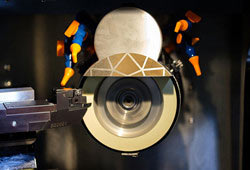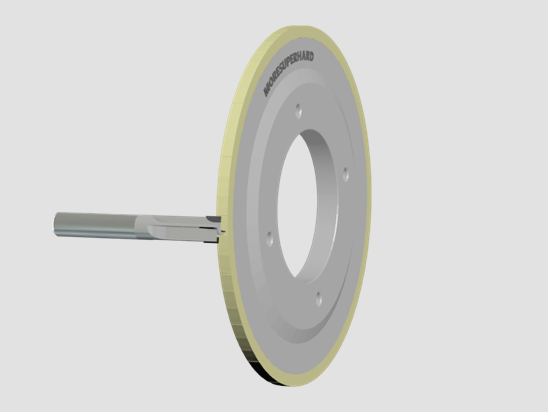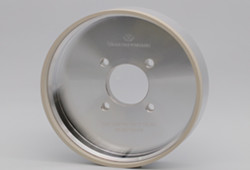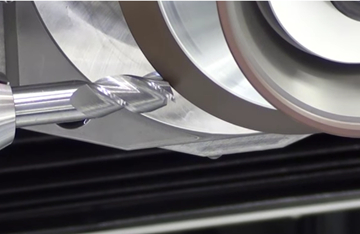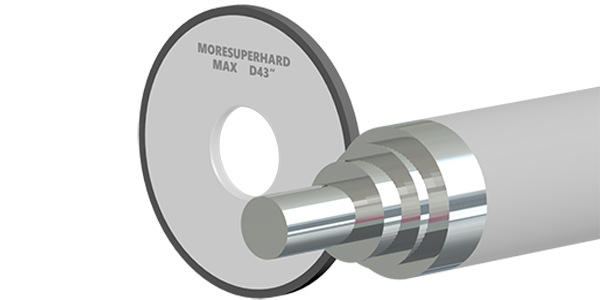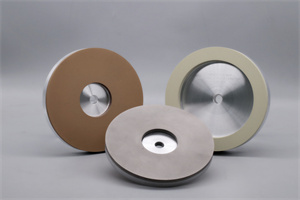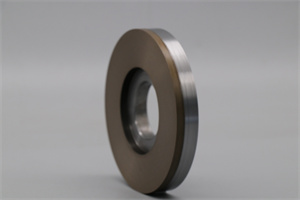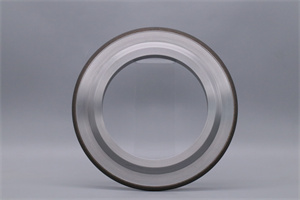Why use vitrified bond for grinding wheels?
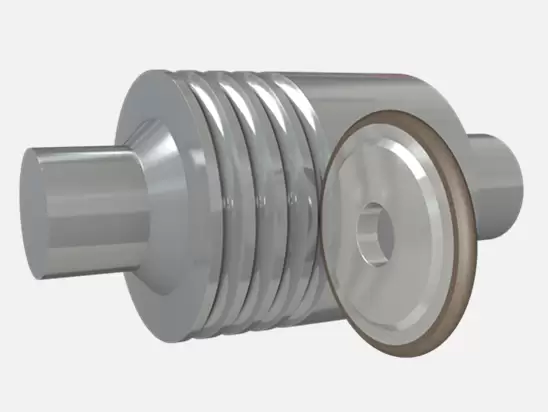
In order to consolidate the hard abrasive particles into a certain shape, the existence of “binding agent” is essential. Its role is mainly reflected in the following two aspects:
1. Shape the abrasive into an abrasive tool
Abrasives, whether they are ordinary abrasives or super-hard abrasives, are barren materials and have no molding properties themselves. They can be molded by adding bonding agents, temporary bonding agents, wetting agents, etc., and then fired, the abrasives pass through the bonding agent. The bridges are connected to obtain an abrasive tool with a certain strength and hardness.
2. Make the grinding wheel capable of grinding
The hardness of the grinding wheel is also called the degree of bonding abroad, which refers to the holding strength of the bonding agent to the abrasive. The hardness of the grinding wheel is a very important performance index of the abrasive tool, which directly affects the various performances of the grinding wheel, such as the grinding ratio, Self-sharpening, shape retention, etc.
At present, the bonding agent materials used in abrasive tools can be divided into three types: resin, metal and vitrified, each of which has its own advantages. The comparison of their performance can be seen in the following table:
Vitrified bond
The main ingredient of vitrified bond are vitreous material with low melting point, such as borosilicate glass, lead glass, etc.It is widely used in various grinding methods such as outer circle, inner circle, flat surface, centerless, etc. It is the most commonly used bonding agent for abrasive tools.
Vitrified bond is characterized by high chemical stability, almost can work in a variety of cooling media, small elastic deformation, brittle, can be made into a variety of hardness levels of grinding tools to adapt to the processing of various hardness of the workpiece. Vitrified bond has good self-sharpening.
The grinding efficiency of single crystal diamond with vitrified bond grinding wheel is higher than metal bond grinding wheel. The wear ratio is very small and the processing cost is low. Therefore, the grinding efficiency of single crystal diamond with ceramic bond grinding wheel can be greatly improved.
In the aspect of grinding PCD cutting tool, the resin bond is soft and easy to deform during grinding, which can not grind PCD cutter effectively. Metal bond grinding tool has poor self-sharpness and low grinding efficiency, and metal bond grinding wheel will cause serious damage to PCD cutting tool edge. Considering grinding efficiency, durability and machining quality of workpiece surface, ceramic bonded diamond grinding wheel is the most suitable choice for grinding PCD cutting tools.
Metal bond grinding tool has poor self-sharpness, low grinding efficiency and metal bond grinding wheel will cause serious damage to the edge of PCD cutting tool. Considering grinding efficiency, durability and machining quality of workpiece surface, vitrified bond diamond grinding wheel is the most suitable choice for grinding PCD cutting tools.
In addition to single crystal diamond/PCD cutting tools, vitrified diamond grinding wheel are also mainly used in PCBN cutting tools, cemented carbide and new engineering ceramic materials of rough grinding, grinding and ultra precision grinding, cermet, cast iron, ceramics, gemstones, ferrite, concrete, refractory materials, fiber reinforced plastic grinding and processing.
Resin bond
The resin bond has High strength, high elasticity, impact resistance, poor robustness and heat resistance, low porosity. The linear speed of high-speed cutting grinding wheel can reach 80-100m/s, and the grinding load of heavy load grinding wheel increases from about 50kg in the past to more than 1000kg.
It is not easy to burn the workpiece in processing, and the resin is easy to carbonize above 230℃. The high temperature in processing makes the resin local carbonization, which produces self-sharpening, improves the sharpness of grinding and reduces the grinding temperature, so as to avoid burning the workpiece.
Resin diamond grinding wheel has certain elasticity, which is beneficial to improve the finish of the workpiece being processed. The choice of graphite, chromium oxide and other polishing materials as fillers can further reduce the roughness. Suitable for rough grinding process, burr, steel billet, cutting disc and some fine-grained fine grinding wheels.
Metal bond
Metal bond has been widely used in grinding because of its high bonding strength, good formability and long service life. According to the different production process is divided into sintering, electroplating and brazing.
Sintering process
Sintered abrasives are mostly made of bronze and other metals as binders by high-temperature sintering method. They are characterized by high bonding strength, good formability, high temperature resistance, good thermal conductivity and wear resistance, long service life and can bear large loads. However, the grinding efficiency is low, and it is easy to jam and burn the workpiece. Moreover, dressing of metal grinding wheel is difficult.
The shape retention of metal bond diamond grinding wheel is very good, especially suitable for form machining. Moresuperhard metal diamond grinding wheel widely used for different industries, such as :
Metal diamond grinding wheel for MCD,CVD cutting tools grinding
Metal diamond grinding disc for lapping gemstone
Metal diamond grinding wheel for cylindrical grinding /grooving carbide roll
Metal diamond grinding wheel for glass edge grinding
Electroplating process
Electroplating abrasives is a kind of abrasives production process in which ni-Co alloy is deposited on the surface of metal matrix and the abrasives are fixed by electrodeposition. Abrasive is actually just mechanical embedded in the coating of metal, the control force for abrasive is small, in the load of high efficiency grinding easy to fall off (or flake) and lead to overall failure.
Because the production process of electroplating abrasives has only one layer of abrasives and uses higher grade abrasives, the processing efficiency of electroplating abrasives is high and the heat dissipation performance is good. Because there is only one layer of abrasive, so the service life is not as good as other binder abrasives, and in the case of the same abrasive particle size, the surface roughness of the workpiece processed by electroplating is poor.
Among them, resin bond and metal bond grinding wheels have been widely used in industrial production. Although the application amount of vitrified bond grinding wheels is not as large as that of the first two types of grinding wheels, in recent years, the industry has increasingly higher requirements for grinding precision. The combination of “vitrified bond + super-hard abrasive” with higher grinding accuracy, grinding efficiency and low grinding stress has attracted more and more attention.
*For example, the market share of vitrified bond diamond grinding wheels has grown at a considerable rate every year.
Compared with resin grinding, vitrified bond diamond grinding wheels have the following advantages:
(1) The grinding efficiency of vitrified grinding wheels is high.
(2) Large feeds can be used for vitrified grinding wheels. When the feed rate exceeds a certain amount, the resin grinding wheel will not be able to grind.
(3) The vitrified bond diamond abrasive tool hardly needs to be trimmed when grinding, and the resin abrasive tool needs to be trimmed once in a period of time.
(4) due to vitrified The shape retention of the grinding wheel is good, so the grinding accuracy is higher than that of the resin grinding wheel, so it has become the first choice for precision and ultra-precision machining.

